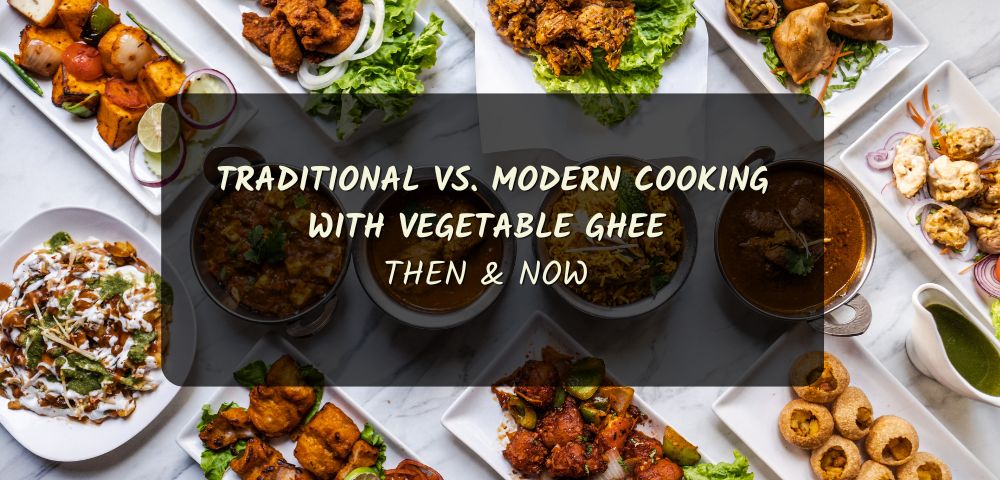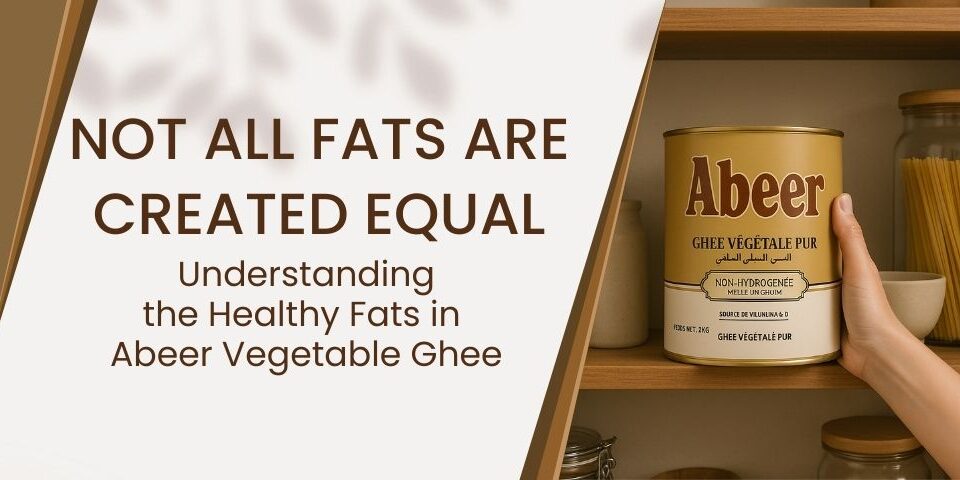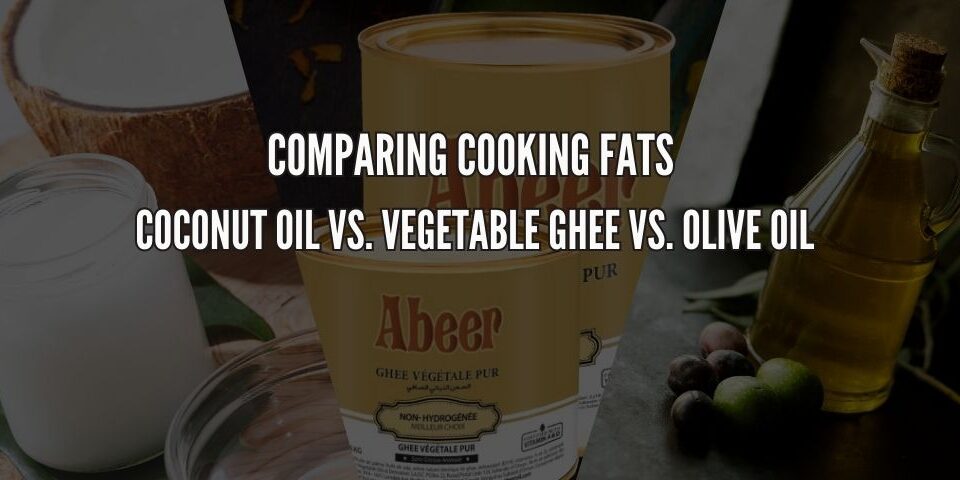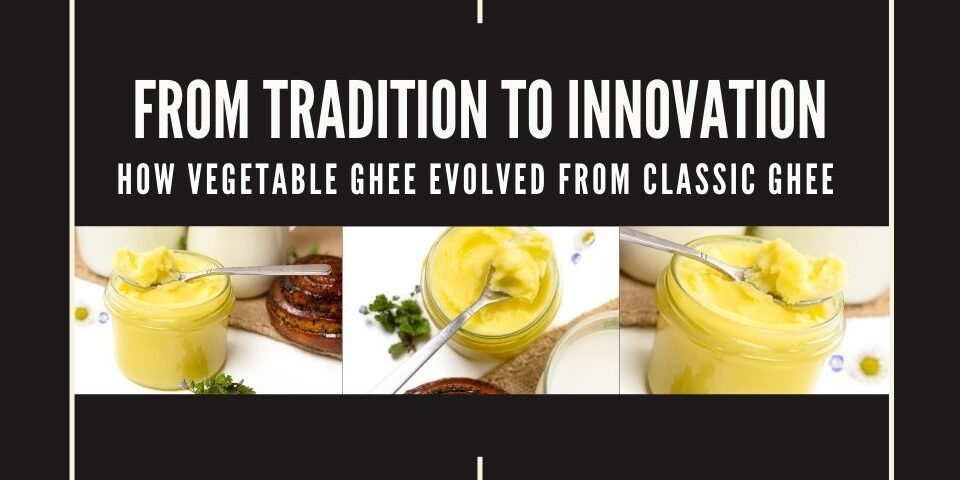
Cooking Hacks with Vegetable Ghee – Pro Tips You Didn’t Know
March 19, 2025
Why Vegetable Ghee Is Ideal for High-Heat Cooking
April 4, 2025Traditional vs. Modern Cooking with Vegetable Ghee – Then & Now

The Evolution of Vegetable Ghee in Cooking
For centuries, ghee has been a staple in kitchens worldwide, especially in South Asian, Middle Eastern, and African cuisines. Traditionally, animal-based ghee was used, but as dietary preferences and cooking techniques evolved, vegetable ghee became a popular alternative.
Today, modern chefs and home cooks are reinventing the use of vegetable ghee, incorporating it into global cuisines, plant-based diets, and innovative cooking techniques.
Let’s explore how vegetable ghee was used in the past versus how it’s being utilized today.
1. Traditional Uses of Ghee in Cooking
Cooking with Ghee in Ancient Times
Ghee has long been considered a sacred and essential ingredient in South Asian and Middle Eastern cultures. Traditionally, it was used for:
- Deep-frying and sautéing – Cooking spices, vegetables, and meats.
- Enhancing flavors in rice and lentils – Used in biryanis, pilafs, and dal for richness.
- Traditional breads and flatbreads – Brushed on rotis, parathas, and naans.
- Making desserts – Used in halwa, baklava, and other sweets.
- Ayurvedic medicine – Ghee was believed to have healing properties and was often used for digestion and immunity.
For more details you can also read The Health Benefits of Vegetable Ghee: A Nutritious Choice.
2. Why Vegetable Ghee Became a Popular Alternative
In the 20th century, as people became more health-conscious and looked for plant-based alternatives, vegetable ghee started to gain popularity. Reasons for its rise include:
✔ Vegan and dairy-free – Unlike traditional ghee, vegetable ghee contains no dairy and is suitable for lactose-intolerant individuals.
✔ Longer shelf life – Vegetable ghee does not spoil as quickly as traditional ghee.
✔ Affordable and accessible – Made from plant-based oils, vegetable ghee became widely available worldwide.
3. Modern Cooking with Vegetable Ghee: A Culinary Revolution
How Chefs and Home Cooks Use Ghee Today
While vegetable ghee is still used for traditional cooking, modern food trends have expanded its role in exciting ways.
1. Vegan and Plant-Based Cooking
- Used as a butter replacement in plant-based diets.
- Popular in vegan baking for a rich, buttery texture.
- Enhances flavor in dairy-free curries, soups, and sauces.
2. High-Heat Cooking and Deep-Frying
- With a high smoke point of 450°F (232°C), vegetable ghee is used for deep-frying, searing meats, and stir-frying.
- Chefs prefer it over olive oil for crispy, golden textures in fried foods.
3. Fusion Cooking
- Used in non-traditional dishes like ghee-roasted pasta, ghee-infused mashed potatoes, and ghee-seared tofu.
- Blended with international flavors, such as truffle-infused ghee or spiced ghee for Tex-Mex cuisine.
4. Ghee in the Future: What’s Next?
As the demand for healthier, sustainable, and plant-based ingredients grows, vegetable ghee is likely to become even more popular. Future trends may include:
✔ Specialty flavored ghee – Infused with herbs, garlic, or spices for added depth.
✔ Ready-to-use ghee-based sauces – Pre-mixed sauces for easy meal prep.
✔ More fusion recipes – Expect to see ghee used in Western, Asian, and even Latin American cuisines.
A Timeless Ingredient with a Modern Twist
From traditional kitchens to modern fusion restaurants, vegetable ghee has stood the test of time. Whether you prefer classic dishes or innovative recipes, Abeer Vegetable Ghee is a versatile, flavorful, and healthier choice for today’s cooking needs.



